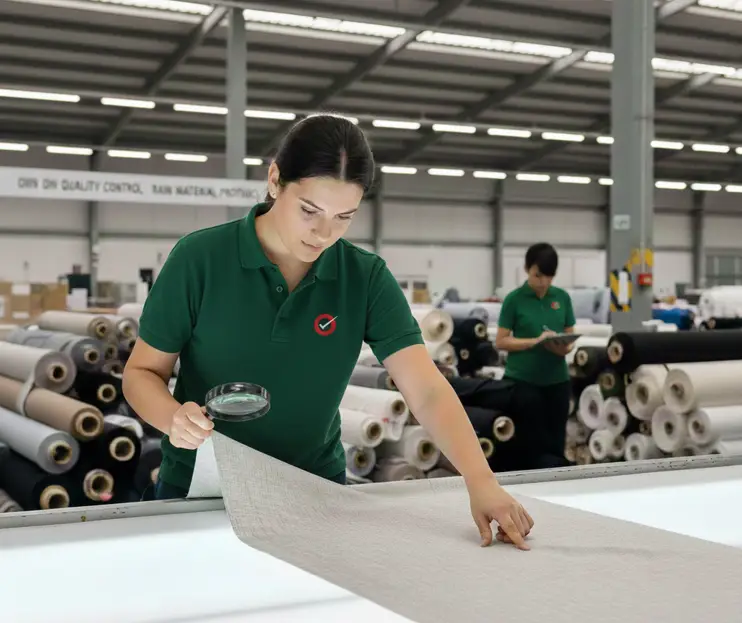Inspections during production

Inspections During Production
Your Secret Weapon for Perfect Products
When importing or sourcing products globally, quality is everything. One small defect can ruin shipments, increase returns, and damage your brand. That’s why QIV Global’s inspections during production are trusted by importers, sourcing experts, and quality managers worldwide to guarantee flawless products, every time.
Why Our Inspections Are a Game-Changer?
- Prevent Costly Errors Early – Catch defects before they multiply.
- Ensure Production Accuracy – Verify processes, materials, and workmanship from day one.
- Protect Your Brand Reputation – Only compliant, high-quality products leave the factory.
- Gain Real-Time Insights – Track progress, defects, and supplier performance remotely.
- Reduce Rework & Returns – Avoid delays, cost overruns, and shipment rejection.
Services Table of Contents
📌 Overview & Purpose
Definition: First Article Inspection ensures the first manufactured unit fully conforms to approved specifications, drawings, materials, workmanship, and functional requirements before mass production begins.
Why Required: Errors at early production stages often repeat across entire orders. FAI prevents costly rework, shipment rejection, and buyer dissatisfaction.
When to Conduct:
- Before mass production
- New product development
- New supplier onboarding
- Design, tooling, or material changes
⚙ Execution & Control
Areas Covered: Design specifications, dimensions, materials, components, appearance, functionality, labeling.
Key Checkpoints: Approved sample, drawings, BOM, tolerances, functional performance.
Process: Document review → first unit inspection → deviation analysis → approval or corrective action.
After Completion: Production approval or corrective action request before bulk manufacturing.
📌 Overview & Purpose
Definition: Initial Production Inspection verifies materials, production setup, and initial output quality during early mass production.
Why Required: Early-stage quality issues can multiply rapidly. IPI ensures proper setup before scaling production.
When to Conduct: At 5–20% production completion.
⚙ Execution & Control
Areas Covered: Raw materials, components, production lines, early finished products.
Key Checkpoints: Material compliance, workmanship consistency, process stability.
Process: Material verification → line inspection → sample evaluation → reporting.
After Completion: Supplier proceeds or corrects issues before scaling production.
📌 Overview & Purpose
Definition: DPI monitors product quality, workmanship, and production progress during ongoing manufacturing.
Why Required: Most defects occur mid-production. DPI enables early corrections, reduces rework, and protects shipment timelines.
When to Conduct: At 20–80% production completion.
⚙ Execution & Control
Areas Covered: Workmanship, in-process products, production flow, output quantity.
Key Checkpoints: Defect trends, process compliance, timeline adherence.
Process: On-site inspection → sampling → progress review → corrective action reporting.
After Completion: Immediate fixes and follow-up monitoring.
📌 Overview & Purpose
Definition: Defect Sorting identifies, separates, and removes non-conforming products from acceptable units.
Why Required: Mixed-quality shipments result in rejection, rework costs, and brand damage.
When to Conduct: Before shipment or after quality incidents.
⚙ Execution & Control
Areas Covered: Finished goods, semi-finished items, warehouse stock.
Key Checkpoints: Visual defects, functionality, labeling.
Process: Inspection → segregation → rework/rejection → final verification.
After Completion: Only compliant products proceed to shipment.
📌 Overview & Purpose
Definition: Continuous supervision of production progress and corrective actions.
Why Required: Remote buyers lack real-time factory visibility.
When to Conduct: Long or complex production cycles.
⚙ Execution & Control
Areas Covered: Production schedules, defect trends, supplier compliance.
Process: Scheduled inspections → progress tracking → reporting.
After Completion: Production remains aligned with delivery and quality goals.
📌 Overview & Purpose
Definition: Independent collection of random samples for testing or approval.
Why Required: Supplier-selected samples may not represent actual production quality.
When to Conduct: Before lab testing or buyer approvals.
⚙ Execution & Control
Areas Covered: Production samples, warehouse stock.
Process: Random selection → sealing → documentation → shipment.
After Completion: Accurate testing and reliable approvals.
📌 Overview & Purpose
Definition: Verification of packaging quality, labeling, and shipment readiness.
Why Required: Poor packaging causes transit damage and customs delays.
When to Conduct: Before shipment.
⚙ Execution & Control
Areas Covered: Cartons, labels, barcodes, packing methods.
Process: Packaging check → labeling verification → reporting.
After Completion: Goods approved for safe shipment.
📌 Overview & Purpose
Definition: Inspection to detect metal contamination in finished products.
Why Required: Ensures buyer and regulatory safety compliance.
When to Conduct: Before packing or shipment.
⚙ Execution & Control
Areas Covered: Finished products, safety controls.
Process: Metal detection testing → segregation → documentation.
After Completion: Only safe products released.
📌 Overview & Purpose
Definition: Inspection of every single product unit.
Why Required: Zero-defect tolerance orders.
When to Conduct: High-risk or high-value shipments.
⚙ Execution & Control
Areas Covered: Appearance, function, labeling.
Process: Unit-by-unit inspection → sorting → final approval.
After Completion: Shipment meets strict quality standards.
📌 Overview & Purpose
Definition: Statistical inspection conducted after production and packing.
Why Required: Final control before shipment release.
When to Conduct: When production is 100% completed.
⚙ Execution & Control
Areas Covered: Quality, quantity, packaging, labeling.
Process: Random sampling → inspection → pass/fail decision.
After Completion: Shipment approved or corrective action required.
📌 Overview & Purpose
Definition: Corrective and Preventive Action (CAPA) management with progress monitoring.
Why Required: Eliminates recurring quality problems.
When to Conduct: After repeated defects or audits.
⚙ Execution & Control
Areas Covered: Root cause analysis, corrective actions, supplier improvement.
Process: Issue identification → CAPA plan → verification.
After Completion: Sustained long-term quality improvement.
Why Importers, Sourcing Experts & Quality Managers Love QIV Global
✅ Confidence in Every Shipment – No surprises, no rejects.
✅ Cost Savings – Reduce rework, returns, and delays.
✅ Compliance Guaranteed – Meet global regulations and buyer expectations.
✅ Actionable Insights – Real-time reporting and supplier accountability.
✅ Brand Protection – Only high-quality, perfect products reach your customers.
Your Production. Perfect. Every Time.
With QIV Global, inspections aren’t just checks—they’re a strategic advantage. Turn risks into certainty, problems into solutions, and production into perfection.
